Marine Cooling Pumps – The Ultimate Guide
February 9th, 2021
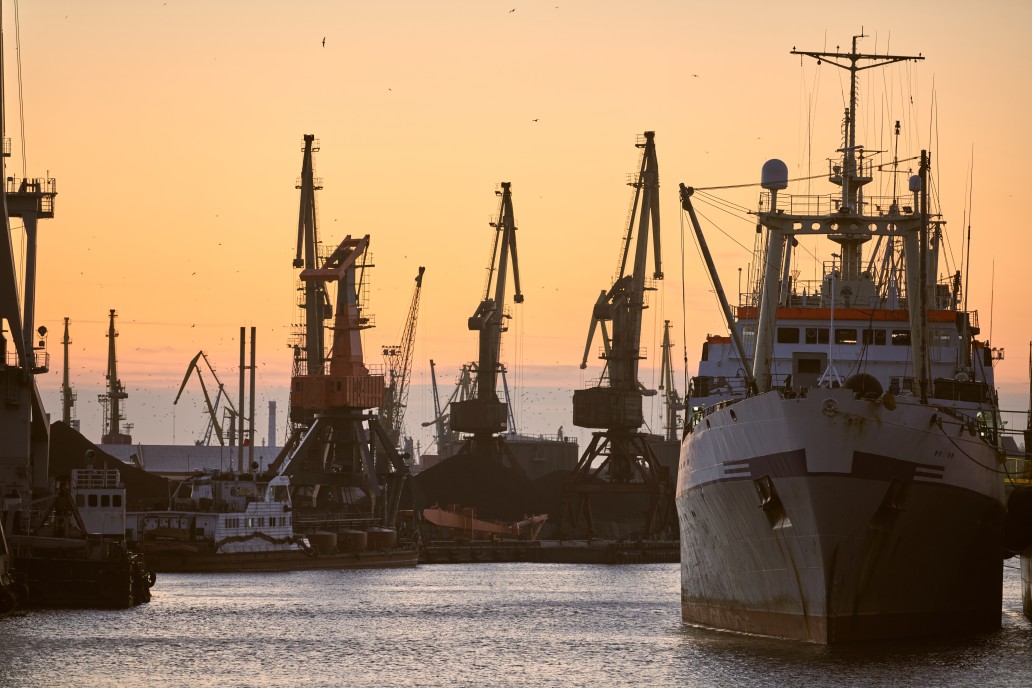
One of the most critical systems on ships is the cooling system. Large vessels need a way to safely remove unusable heat from their main engine, auxiliary engines, generators, and other machinery.
At the heart of every ship’s cooling system are the marine cooling pumps. These pumps are responsible for bringing water to every component in the engine room and carrying away the excess heat they produce.
Marine cooling pumps prevent overheating, prolonging the machinery’s life and making the ship safe for everyone on board.
In this article, you’ll get an in-depth look at marine cooling pumps:
- A closer look at direct seawater and central freshwater cooling systems
- The different types of cooling pumps used on ships and what they do
- Marine air conditioning chilled water pumps
- How to choose the right cooling pumps for your ship
- How to maintain your cooling pumps
- The best cooling pumps for marine applications
There is a lot to cover, so let’s get started.
Marine Cooling Systems
When it comes to cooling for ships, efficiency is crucial. The good news is that modern cooling systems provide excellent performance while running as efficiently as possible.
Today, there are two major types of cooling systems found in ships: direct seawater cooling and central freshwater cooling. Both of these systems have their advantages, which we will have a closer look at now.
Direct Seawater Cooling System
The direct seawater cooling system isn’t as modern as central freshwater systems. However, there are still plenty of ships today that use it.
As the name suggests, direct seawater cooling systems use seawater to remove the unusable heat from the components in the engine room.
System Overview
In this cooling system, seawater is pumped continuously into the vessel from the sea chest and discharged once it has gone through the engine room’s heat exchangers. High capacity centrifugal pumps are used to suck in and throw out high volumes of water in this loop all day, every day.
In the engine room, the seawater removes heat from various heat exchangers. The seawater makes its way to the engine jacket heat exchanger, the lube oil heat exchanger, and various other heat exchangers.
Seawater does not directly cool the machinery since it is corrosive and can quickly deteriorate or damage the machinery’s metals. That is why heat exchangers are used.
In the heat exchangers, the seawater cools freshwater through conduction. The freshwater then goes into the machinery and cools it, while the seawater continues on the main seawater line.
Heat exchangers come in either tube type or plate type. Either way, they perform the same function using the same principles.Once the seawater has gone through every heat exchanger in the engine room, it is then discarded overboard.
Advantages and Disadvantages of Direct Seawater Cooling
Direct seawater cooling systems provide the ship with a very straightforward system. Installing this type of system is simple and inexpensive since there aren’t as many parts and pumps as the central cooling system has.
However, it also has some disadvantages.
For one, you will need to maintain multiple heat exchangers carefully. If there is a leak in a heat exchanger, the seawater will contaminate the fluid that goes directly into the machinery.
If this happens, it can be detrimental to the lifespan of the machinery. That is why it should be avoided at all costs.
Overall, direct seawater systems are relatively low cost and straightforward to install. But once they are there, they can require more frequent maintenance and repairs. This is the reason why most modern ships today are using central cooling systems instead.
Central Freshwater Cooling System
The central freshwater cooling system has a lot in common with direct seawater cooling. However, several key differences make it the preferred choice in most modern ships.
Central cooling systems still use seawater to remove heat. But instead of the seawater going directly into the individual heat exchangers, the seawater only cools one big centralized cooling loop.
System Overview
There are two significant lines in the central cooling system: the seawater line and the freshwater loop.
In the seawater line, seawater is pumped into the ship through the sea chest and then discharged 24/7, just like the direct seawater system.
But instead of going through various heat exchangers before being thrown overboard, the seawater only passes through two: a high-temperature (HT) and a low-temperature (LT) heat exchanger.
Both the HT and LT lines are full of freshwater. The HT line goes directly into the engine, where it keeps the temperature at around 80 degrees Celsius.
The LT line, on the other hand, connects to several smaller heat exchangers. It connects to heat exchangers for the auxiliary engines and lubricating oil, as well as those for the air compressors and the air conditioning plant.
Advantages and Disadvantages of Central Freshwater Cooling
As you can tell, central freshwater cooling systems are more complicated than direct seawater ones. They also require more pumps and are more expensive to install.
That said, central cooling systems are much easier to maintain. As mentioned before, seawater is very corrosive. The more pumps and pipes dedicated to seawater there are, the more difficult maintenance will be.
In central freshwater systems, the main seawater line can be relatively short. It doesn’t have to travel to all the heat exchangers in the engine room since that will now be the freshwater loop’s job.
Marine Seawater Cooling Pumps
The specifics of cooling systems differ from ship to ship. However, one thing is mostly the same: cooling systems start with the marine seawater pump.
Marine seawater pumps are high capacity centrifugal pumps that pull in seawater through the sea chest. The pressure generated by these pumps is responsible for discharging the water back into the sea.
Ships typically have two or three seawater pumps. This is so that if one pump needs servicing, the non-stop pumping of seawater can continue.
As we have already explored, the main seawater pumps are the primary cooling line for ships. However, they can also serve several other purposes.
These same pumps can be used for firefighting, bilge removal, cargo washing, or anything that requires high volumes of seawater fast.
What to Look for In Marine Seawater Pumps
When selecting a marine seawater pump, there are several things you must consider first. One of these is the material of your pump and piping.
Since these pumps handle saltwater, a corrosion-resistant material is highly recommended. Stainless steel alloys, like CD4MCu duplex stainless steel, are excellent for seawater applications. Bronze is another material that performs well for handling seawater.
Another thing to consider is the capacity of your seawater pumps. While the exact GPM (gallons per minute) you require varies from ship to ship, it is typically very high.
The main seawater pump needs high capacities since it is ultimately responsible for the removal of the engine room’s excess heat – which can be an overwhelming amount.
You should also consider the total head of your pump. Unless your main seawater line is a closed loop (closed loops are used when overboard discharge is not allowed), it is essential to know the minimum head required for your pump. To calculate head, use this equation:
Elevation + friction loss + pressure = total head
Elevation refers to the total vertical rise from the lowest to the highest point in the line. It does not take into account the horizontal distance.
Friction loss is the amount of pressure lost due to friction with the pipes. This measurement depends on the type of fluid, the pipes’ material, the lines’ diameter, and the total length.
You can get the amount of friction loss by using a friction loss calculator.
Pressure refers to how much pressure is in the system (1 PSI = 2.31 feet of head for fluids with a specific gravity of one). Add all those together, and you will get the minimum total head you need from your pump in feet. Make sure your pump exceeds that number.
One feature you should consider in your seawater cooling pump is variable speed operation. This feature improves efficiency onboard as it allows you to control how much seawater is pumped into the cooling line.
The temperature of seawater varies greatly depending on environmental conditions. Water in the Bering Sea will always be colder than water in the Caribbean. For this reason, your seawater cooling pumps don’t always have to run at full capacity to do their job effectively.
By using a system with variable speed operation, you can cut on your power usage. Not only that, but the lighter hydraulic loads will also prolong the lifespan of your seawater pump.
Finally, when you are looking for an excellent marine seawater pump, look for one that is ABS approved. A pump with these can ensure additional quality and may be required for compliance with national and international regulations.
Best Marine Seawater Cooling Pump
While there are several seawater cooling pumps to choose from for marine applications, your best option is the GH by Carver Pump.
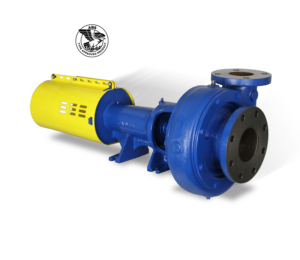
The GH is a high-capacity centrifugal pump with flows up to 2,500 GPM and heads up to 520 feet. It comes in 28 different sizes and comes in either JM (close-coupled) or JP (frame-mounted) shafts.
Furthermore, the GH is ABS approved. It is built to the industry’s highest standards and will never let you down when you are out on the ocean.
For compliance with ASTM F-998 specifications, Carver Pump offers the M-Series close-coupled pump.
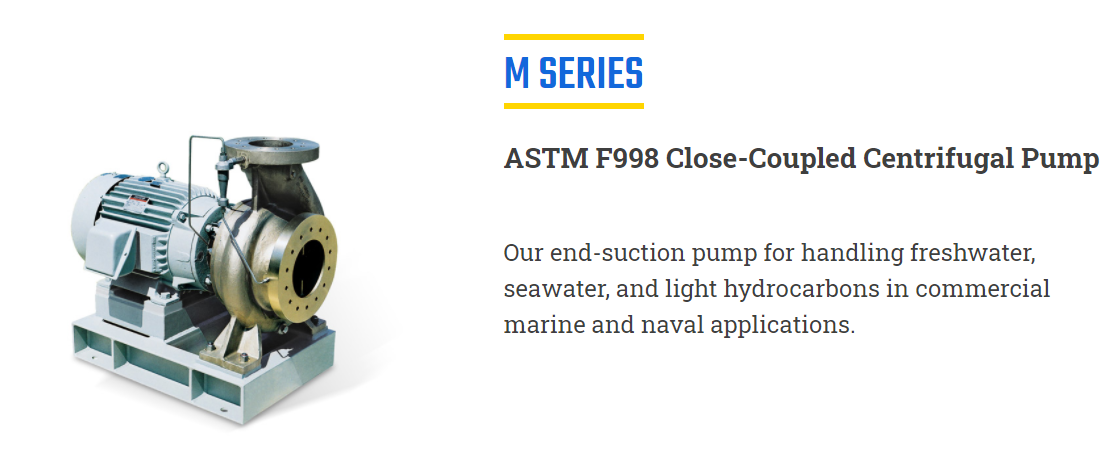
You may have your GH or M-Series manufactured in a variety of materials, including CD4MCu duplex stainless steel. This way, you won’t have to worry about corrosion from the saltwater.
Another great option you have for the main seawater line is the self-priming KEF series.
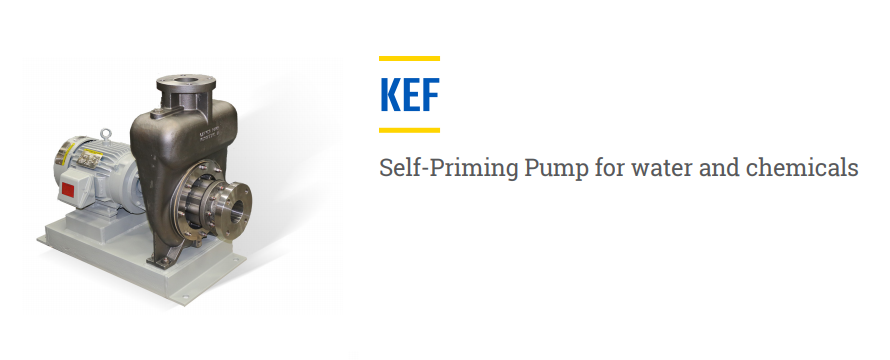
And the G2C vertical sump pump.
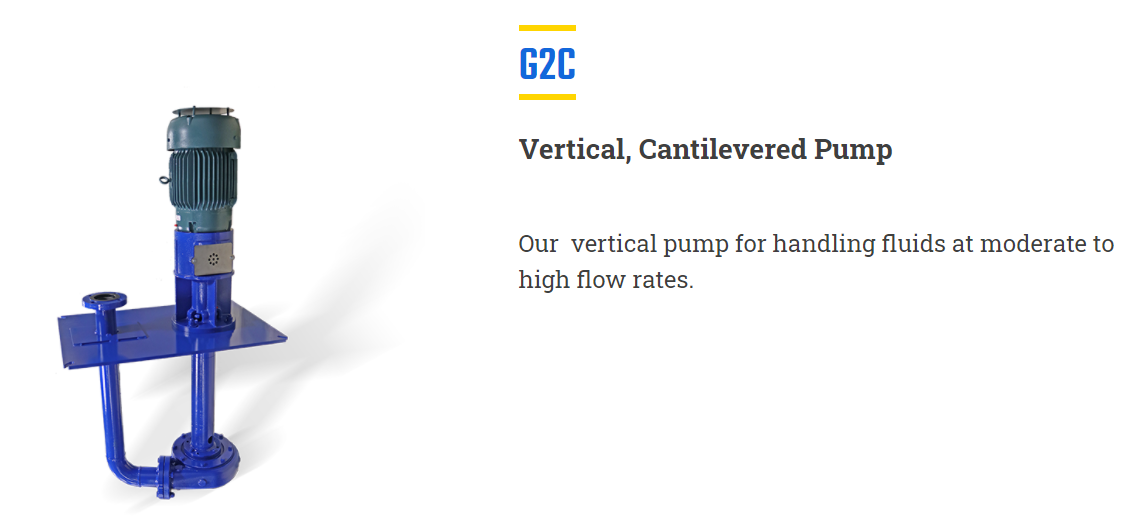
Marine Freshwater Cooling Pumps
Unlike the seawater cooling pumps, fresh water cooling pumps are in a closed-loop system. This means that there is no piping inlet or outlet. Instead, the freshwater is continuously circulated.
There may be several freshwater loops on a ship. Each component that needs cooling has its own loop that connects to a heat exchanger. There, it is cooled by either the main seawater line or the central freshwater cooling line.
Because they are closed-loop systems, freshwater cooling lines must always be at a specific pressure. To ensure they stay at a consistent pressure, these loops can have expansion tanks.
Expansion tanks have an air bladder inside that keeps the line at a stable pressure. It presses more water into the line if the pressure goes down and takes in some water if the pressure is too high.
Aside from expansion tanks, freshwater cooling loops can also use temperature control valves. These automatic valves have sensors that keep the water at the right temperature at all times. If the water is too cold, these valves let it bypass the heat exchanger.
While every ship’s specifics are different, most central cooling systems have a high-temperature (HT) loop and a low-temperature (LT) loop.
High-Temperature (HT) Cooling Loop Overview
The HT loop’s job is to keep the engine at the right temperature. It not only prevents overheating but also ensures that the engine doesn’t get too cold to start.
The ideal temperature of the engine is often around 80 degrees Celsius. Without the HT line to cool it, the running engine will far exceed that temperature. But if the engine isn’t running when on port, the engine temperature will drop too far without the HT line keeping it warm.
Since the HT loop needs to stay at a consistent temperature, a heater is installed on the line. The heater warms the water up whenever it drops below the ideal temperature. It works together with the heat exchanger to ensure the line is always at the desired temperature.
Aside from regulating the engine’s temperature, some ships also use the HT loop for desalination purposes. The warm water enters a freshwater generator, where the low-pressure environment makes it hot enough to evaporate the salt water inside.
Again, the exact specifics of the HT line vary from ship to ship. Some ships use seawater to regulate the HT line’s temperature, while others use freshwater from the central loop.
Low-Temperature (LT) Cooling Loop Overview
The LT cooling loop is used for anything in the engine room that gives off too much heat. Unlike the engine, the components that the LT line cools don’t have to stay warm to operate. They simply need to have the excess heat they produce removed.
The LT cooling loops cool the lubricating oil, air compressors, auxiliaries, main engine air coolers, atmospheric condensers, electronics (if the ship has high-powered electronics), air conditioner system, and, in some cases, also the HT loop.
How to Select Freshwater Cooling Pumps
Selecting the right freshwater cooling pump will again depend on the exact requirements of your ship. To determine the flow rate that you need, you have to consider how much excess heat the engine room components produce. Once you know this, it will help you determine how much flow you need to effectively and efficiently remove this heat.
Another vital thing to consider when choosing your freshwater cooling pump is how much head you need. This is because the total amount of flow you get will depend on your piping system’s total head.
However, since freshwater pumps are in a closed-loop system, you do not need to calculate the line’s elevation since it is always full of water. You just have to calculate the friction losses (including pressure losses through any components such as valves) and required pressure.
Even though the elevation is unimportant, calculating the head in closed-loop systems is still critical. This is because you will need a pump that can pump water to the system’s highest point without inducing a vacuum.
As with the seawater cooling pumps, it is highly recommended that you get a freshwater cooling pump that is ABS certified. These pumps usually exhibit outstanding quality and may ensure that you are in compliance with maritime regulations.
You should also note that the HT and LT lines may need different mechanical seals to deal with the different temperatures. However, you may use the same type of pump for these two lines since any temperature difference is not significant enough to require a completely different pump.
Best Marine Freshwater Cooling Pumps
With all that in mind, the best pump for a ship’s freshwater cooling is still the GH by Carver Pump. Specifically, the GH close-coupled pump.

This pump is extremely versatile and is exceptional for handling both seawater and freshwater. What’s more, the GH is close-coupled, which means it can save a lot of space in the engine room.
Again, this is an ABS approved pump. The GH Series pump from Carver is capable of pumping up to 2,500 GPM and heads up to 400 ft.
For higher flow rates and higher heads, the ASTM F-998-compliant M-Series pump from Carver is also available.
Marine Air Conditioning Chilled Water Pumps
Today, some ships use chilled water systems to provide air conditioning on board. These systems are more efficient than traditional air conditioners because they only need one centralized chiller to cool the entire ship.
How Marine Air Conditioning Chilled Water Works
Like the other cooling systems we’ve explored, air conditioning chilled water is also a closed-loop system.
It starts at the chiller, where water is cooled before being pumped into every compartment by a circulating centrifugal pump. The chilled water makes its way to cooling coils in air handlers in each compartment. The air handlers then suck in warm air and emit cold air to the room. From there, the chilled water returns to the chiller, where it is re-chilled and pumped back across the ship.
Chilled water systems are an efficient way to cool every room on the ship. It also allows you to control the temperature of every room onboard easily. However, since there is one central chiller, it removes a lot of energy and heats up. That is why it needs to be cooled by the low-temperature line as well.
How to Choose a Marine Air Conditioning Chilled Water Pump
The air conditioning chilled water line is similar in a lot of ways to the LT line. It is a closed-loop, and you can determine how much flow you need based on the amount of heat you need to remove from the ship’s spaces.
However, the air conditioning chilled water line is often longer than the LT line. The LT line only needs to cool several engine room components, while the chilled water line needs to go around the entire ship.
For this reason, the chilled water pump often has higher flow requirements. Its piping may be longer, which will increase the amount of pressure needed to pump the water around.
Aside from that and other specifications in your system, the air conditioning chilled water pump may be similar to the fresh water cooling pump, but sized differently for the needs of the air conditioning system.
Best Marine Air Conditioning Chilled Water Pump
Since the chilled water line is similar in many ways to the LT line, it’s no surprise that the GH is a great pump for this application.
Since the GH series comes in 28 different sizes, you will surely find the perfect pump for your chilled water needs. The GH end suction type offers high flows and is an excellent option for delivering chilled water to every compartment onboard.
Marine Cooling Pump Maintenance
The right centrifugal cooling pump will already last you a long time. But with proper maintenance, you can extend its lifespan even further.
The best cooling systems on ships have condition monitoring systems installed. These can detect damage in the coupling, bearings, and seals, as well as misalignments and cavitation in the system. A condition monitoring system will alert you immediately when it finds something isn’t right.
You may also install operation monitoring systems. These ensure that the pump and the entire cooling system is working correctly at all times. It can detect problems, such as high temperatures, and sound an alarm before things get out of hand.
That said, you shouldn’t rely on these monitoring systems. It is still a good idea to perform a visual check of your cooling pumps once in a while to ensure they are running smoothly.
Here are some of the checks that you should perform:
Visual Check: Make sure to inspect your cooling pump on your daily rounds. A simple look may alert you that something is wrong.
Temperature Check: If there is a temperature regulator on the system that automatically ensures that all components are at the ideal temperature, this helps to ensure reliability. However, it is a good idea to manually check temperatures on a periodic basis.
Sound/Noise Level Check: Listen for any abnormal sounds in the pump. Rattling may indicate something is loose.
Also, listen for popping sounds in the close-loop line. Popping noises indicates there may be cavitation.
Vibration Check: Aside from listening for rattling, also inspect the pump if it is vibrating. Marine cooling pumps should run smoothly. Vibrations may indicate that something is wrong or cause damage in the long run.
Pressure Check: The expansion tank should ensure that the pressure in the line is always consistent. Also, the cooling system alarm will alert you if there are any problems.
Nonetheless, it is wise to check the pressure manually now and then. A leak in the line can be dismal for the entire system and the components being cooled.
Power Reading: Checking your motor amperage draw is another way you can spot problems early on. Take a power reading once a week.
Components Check: Aside from the pump, it’s also critical to ensure that all other elements in the cooling system are functioning correctly.
Check the heat exchanger, the expansion tank, and anything else installed on the cooling line.
Running Hours Check: An excellent cooling pump should last a long time. However, you will have to replace certain wear parts as part of a successful preventive maintenance program.
Even if your pump is still working correctly, replacing seals, bearings, or wear rings periodically will ensure that the pumps are running efficiently and will prevent downtime or damage to your pumps.
How to Prime a Marine Cooling Pump
Typically, priming a centrifugal pump follows the same general steps:
- Close discharge valve
- Open top vent
- Open outside supply line to start filling the pump
- Wait for the fluid to reach the top vent
- Close top vent
- Close outside water supply line
However, since most cooling pumps are in a closed-loop system, things are slightly different.
In closed-loop systems, you need to prime the entire loop, not just the pump. Remember, any air in the line can cause severe problems with the pump.
That is why the supply line must fill the entire system first. Only then can you start the marine cooling pump.
Carver Pump: Producing The Best Cooling Pumps for Marine Applications
Whether you need a pump for cooling or any other marine application, trust your shipboard services to Carver Pump, the industry leader in shipboard centrifugal pumps.
Carver Pump’s quality management system is certified by Intertek to conform to ISO 9001:2015.
Our commitment to quality includes not only our hardware, but also superior customer service, leading-edge R&D, and continuous improvement in everything we do.
Based in Muscatine, Iowa, all Carver Pump pumps are proudly American-made.